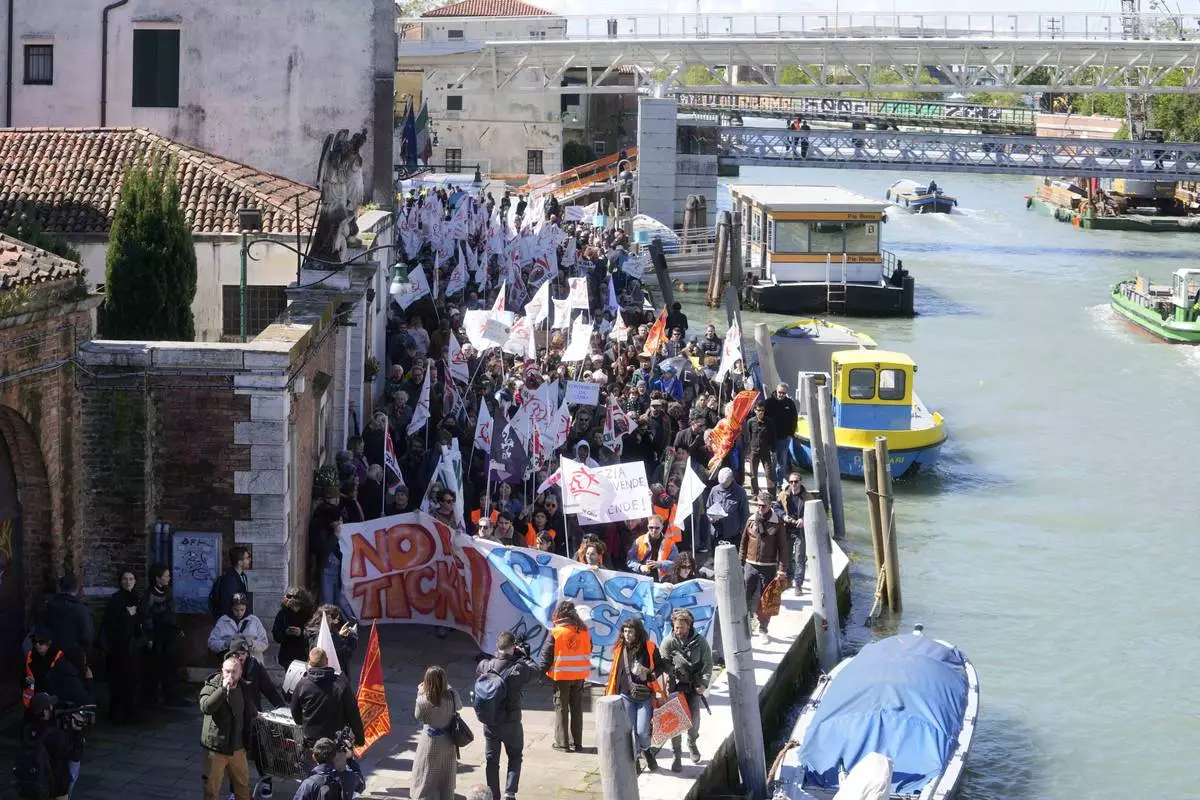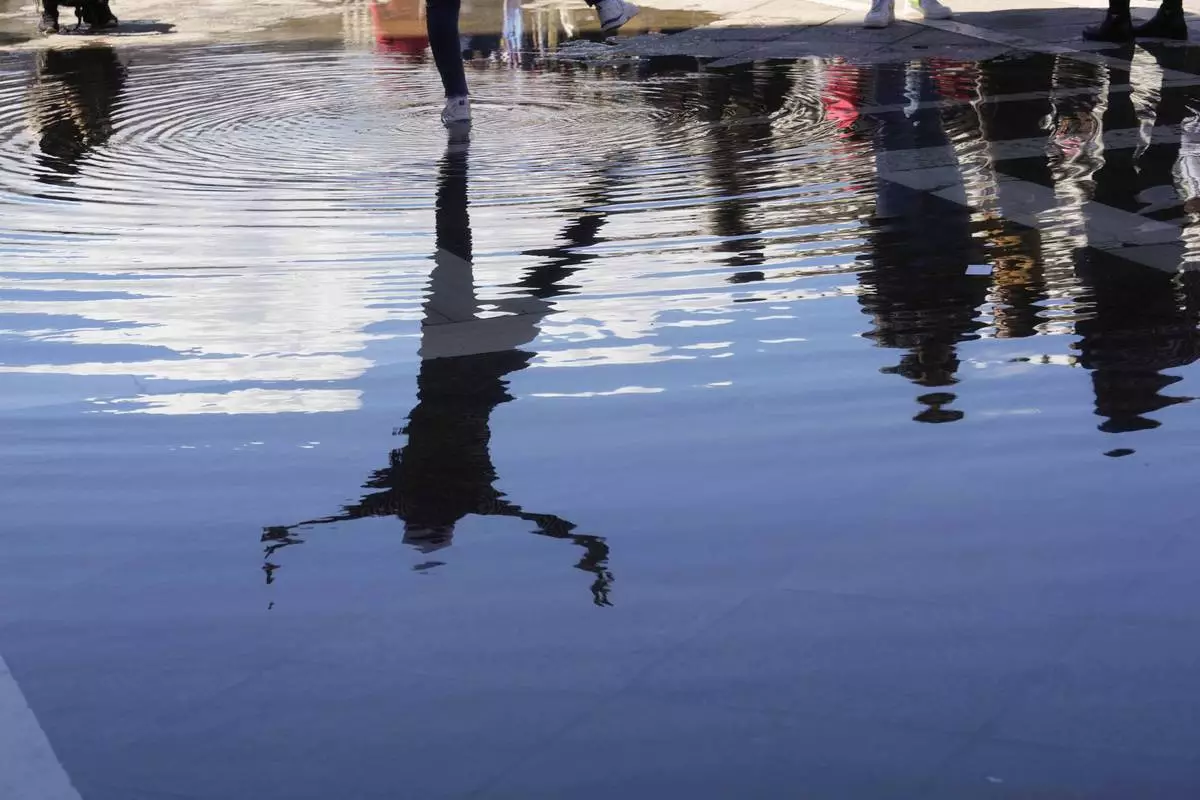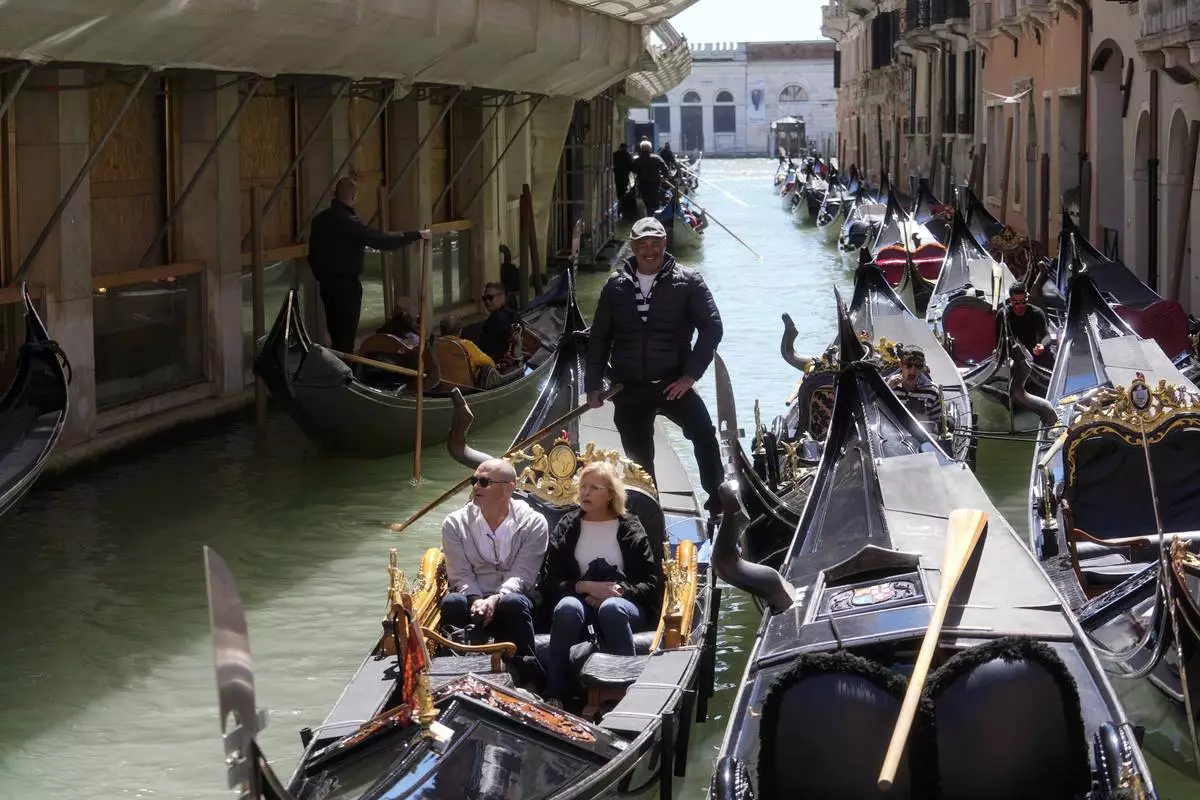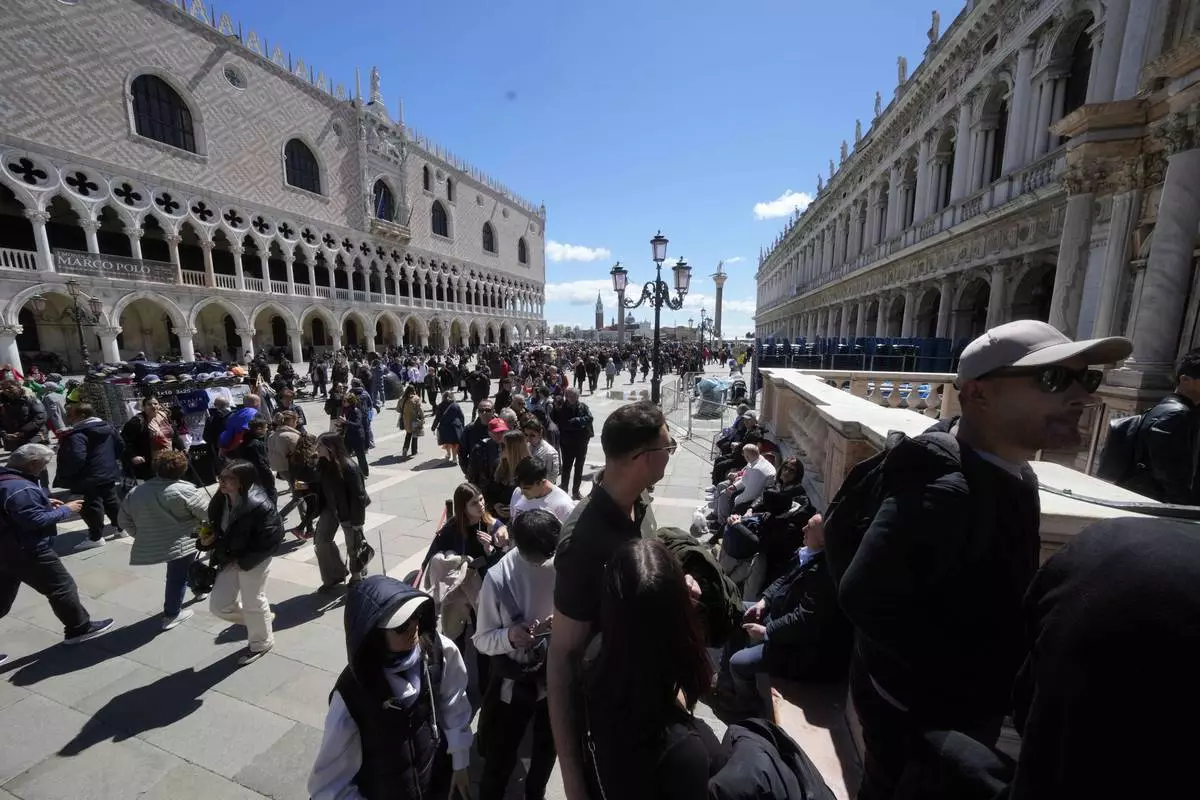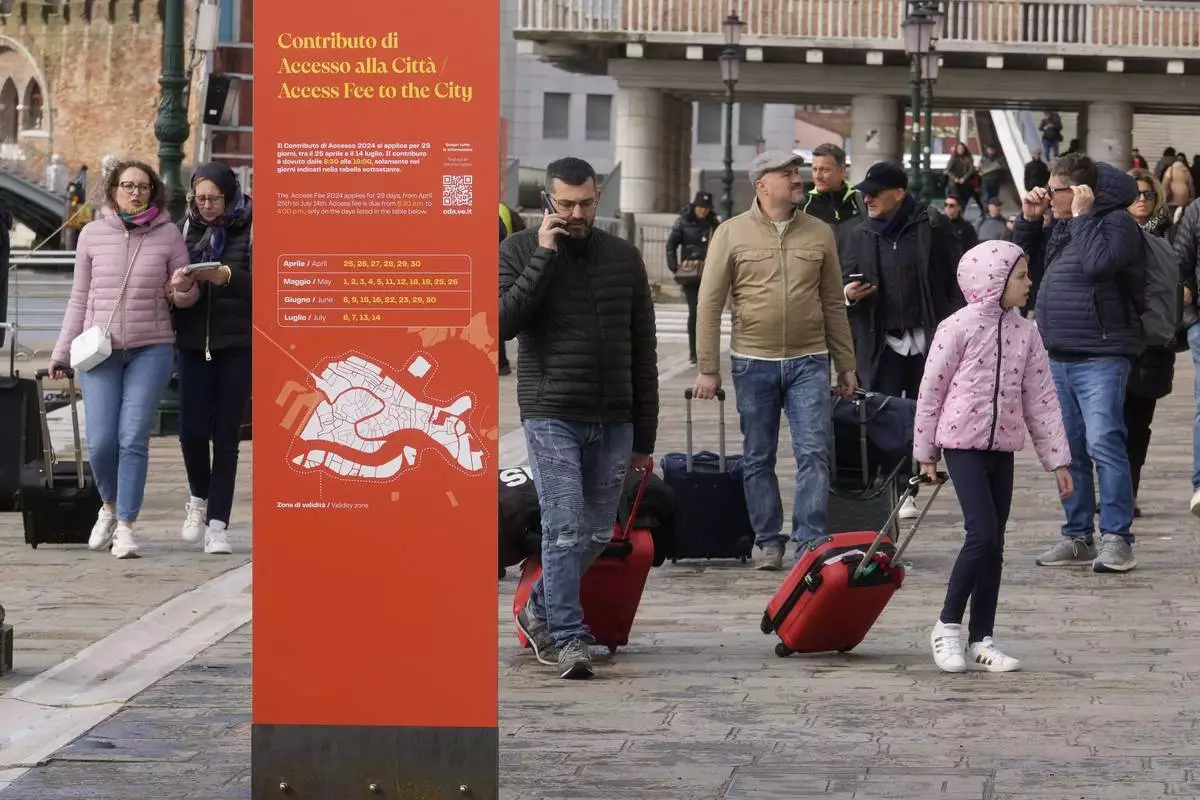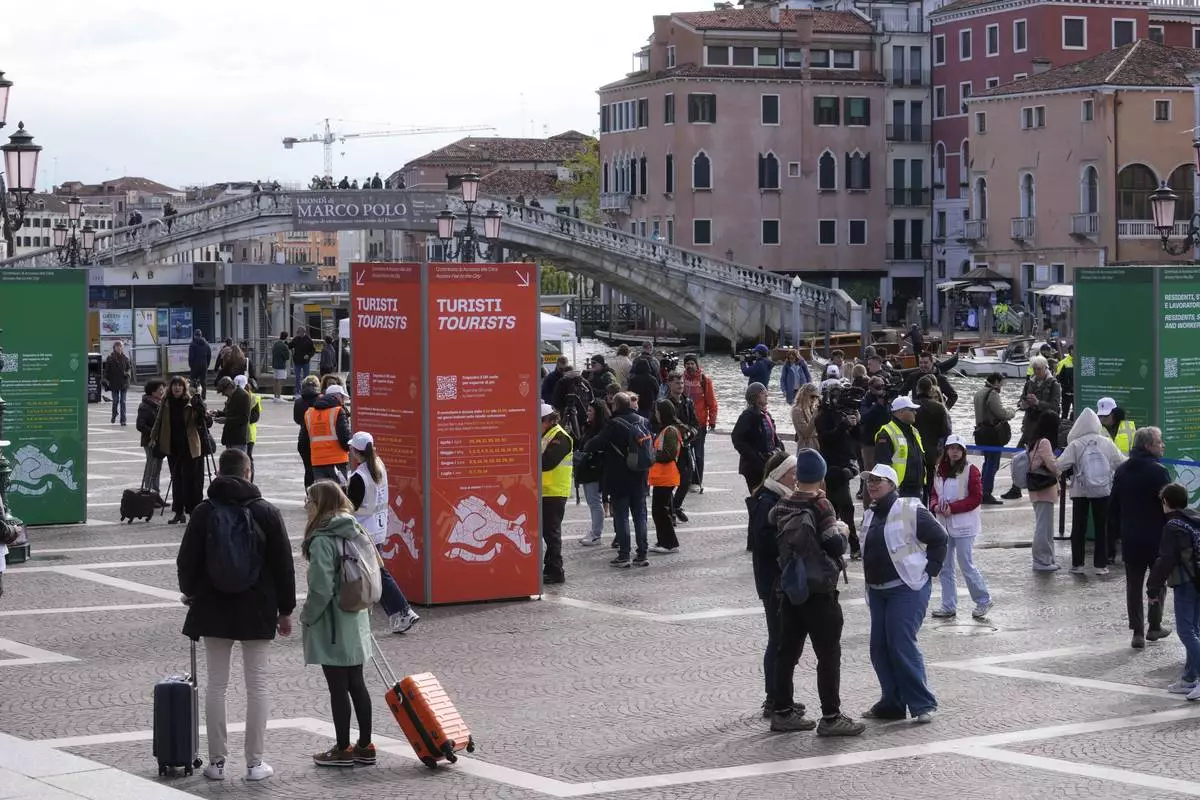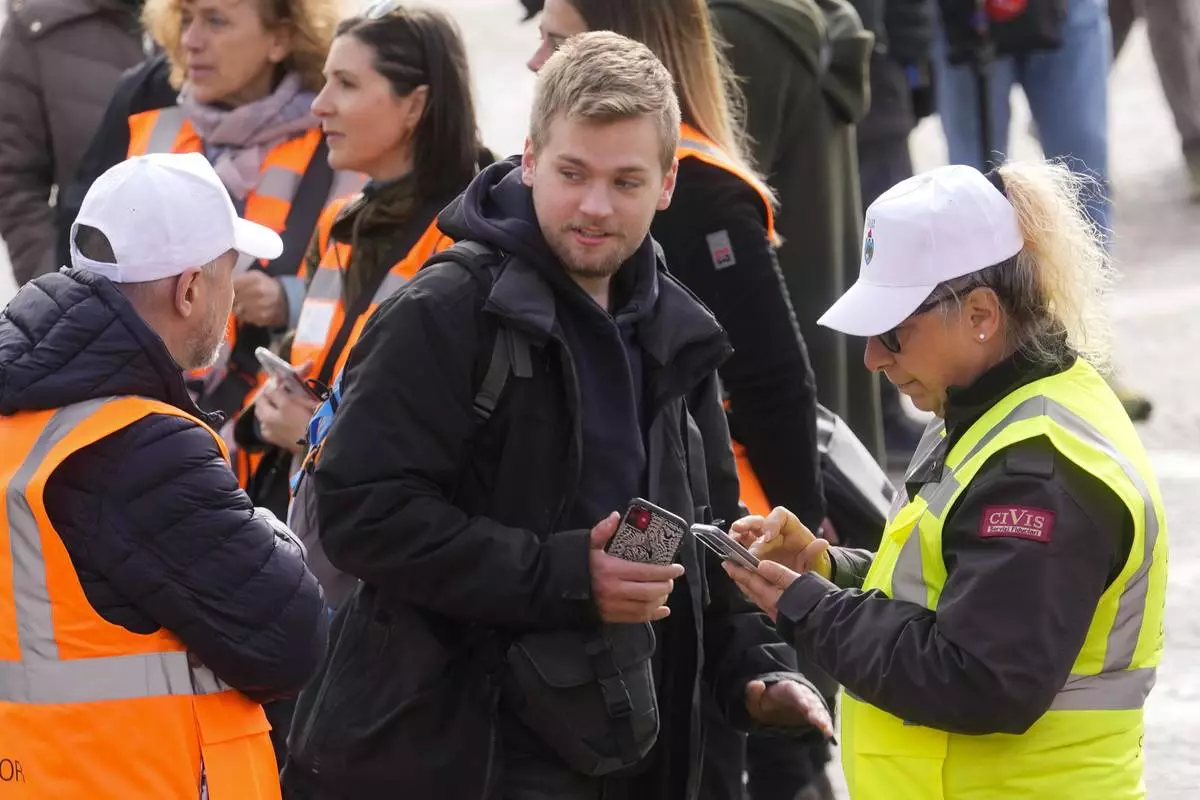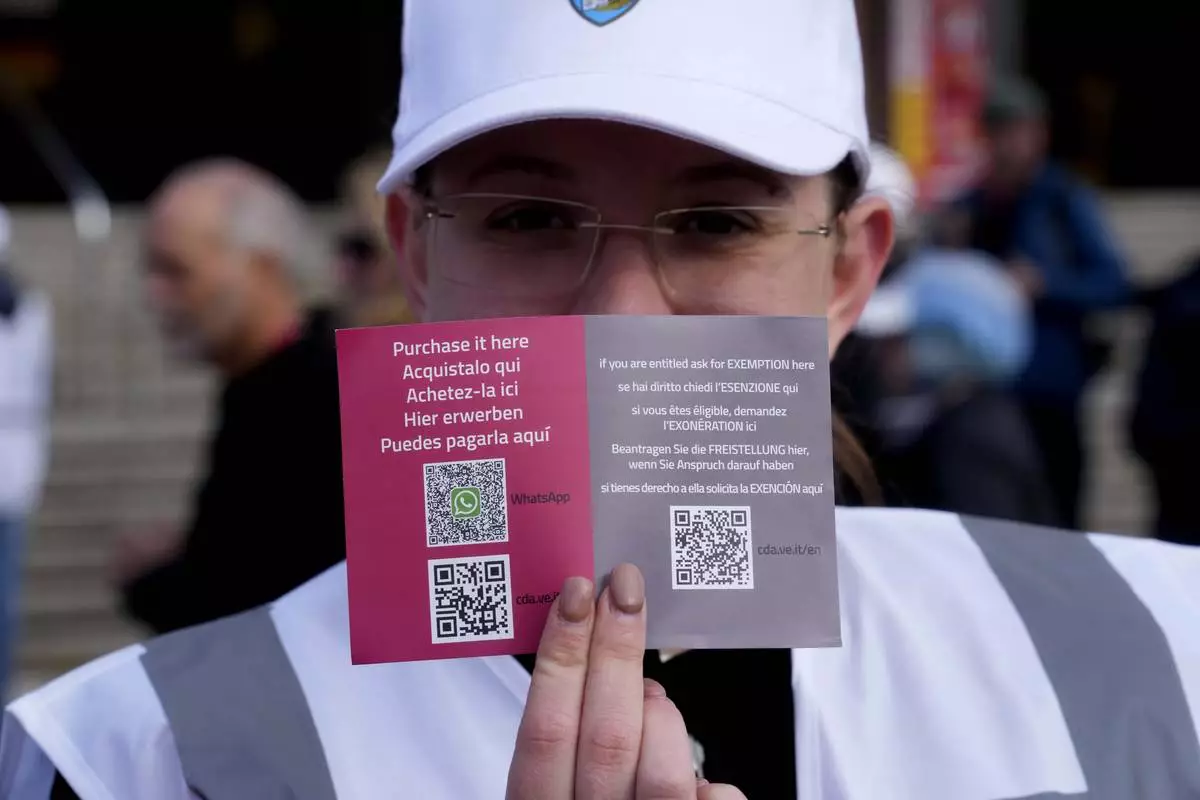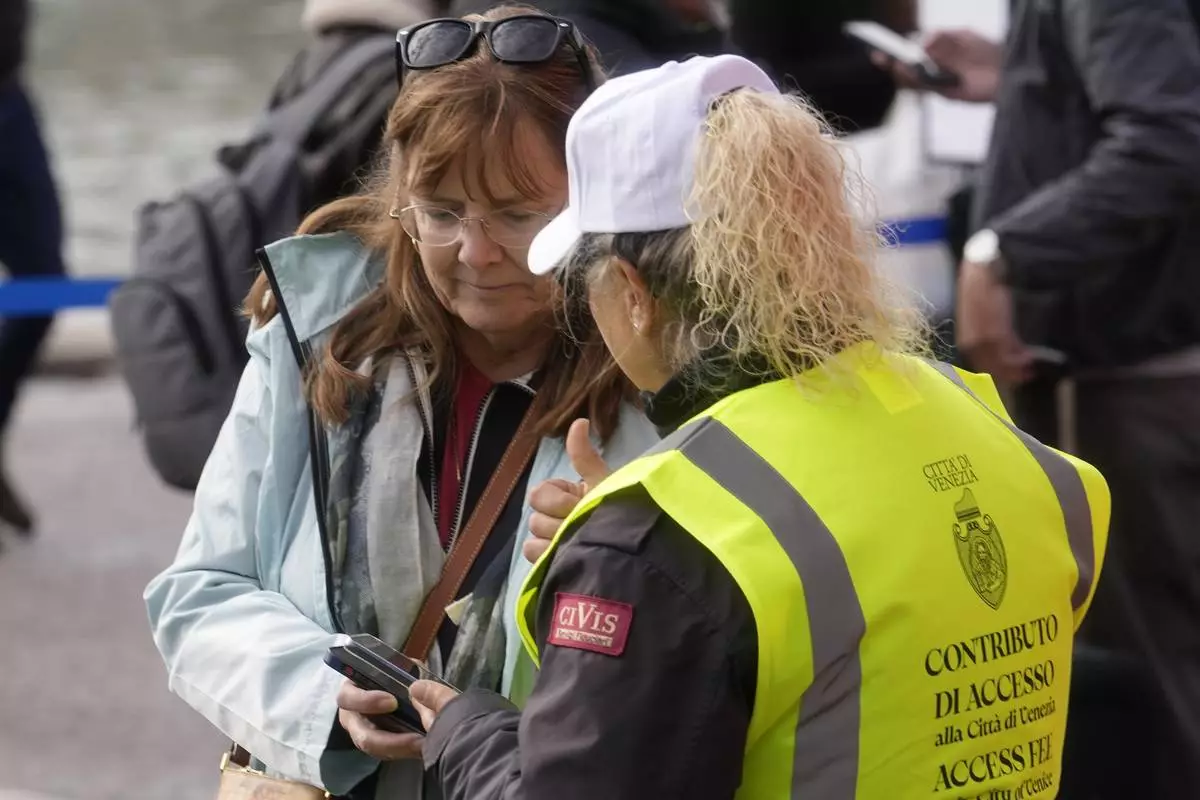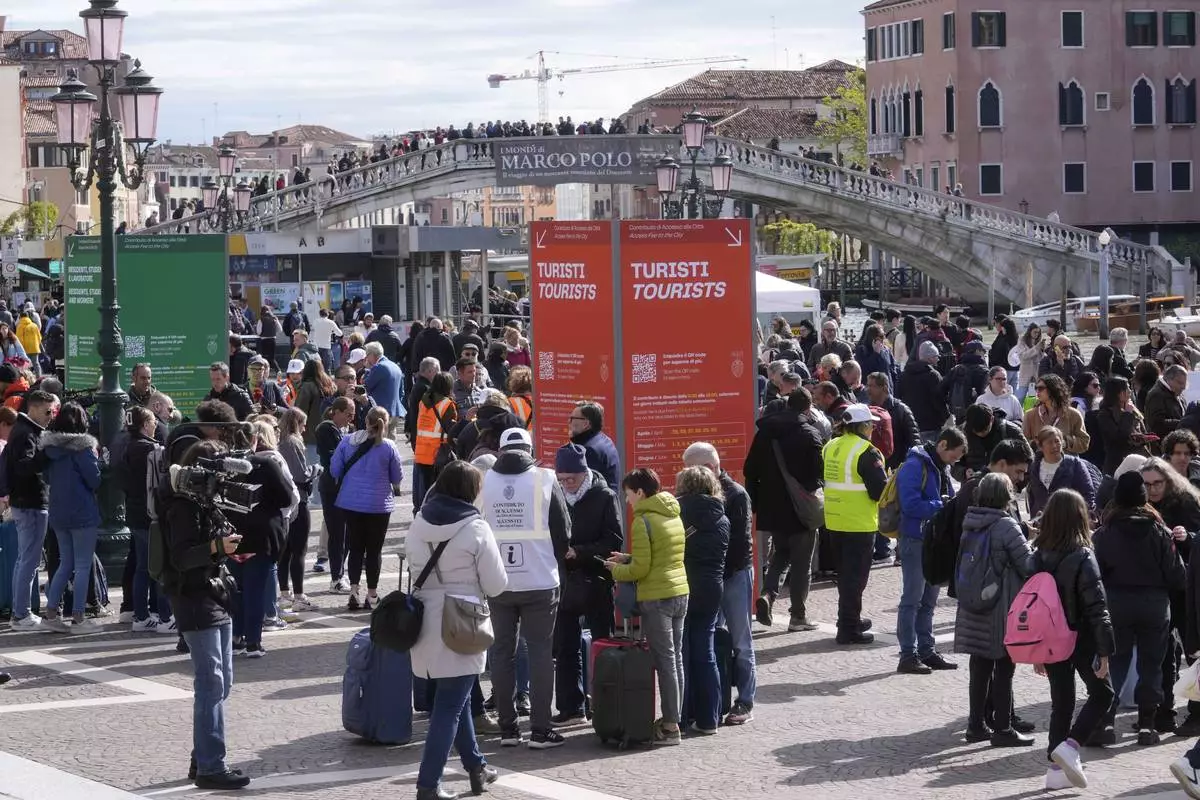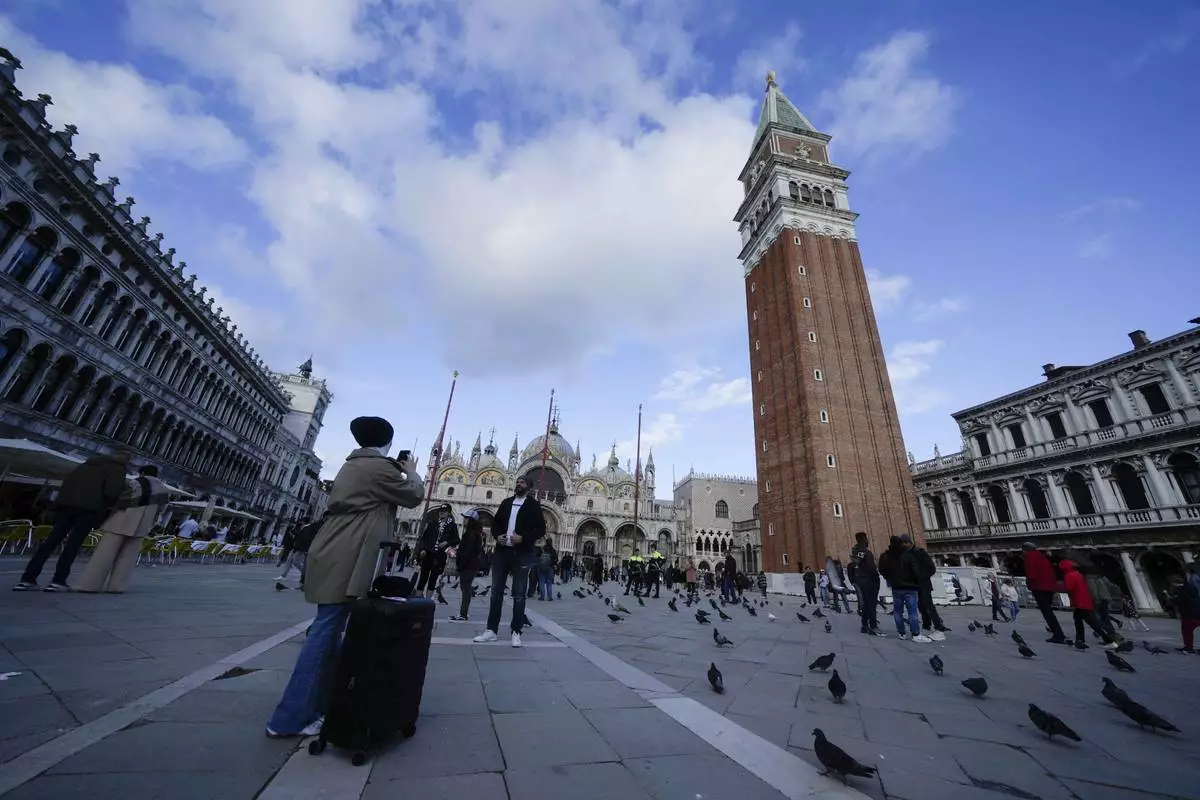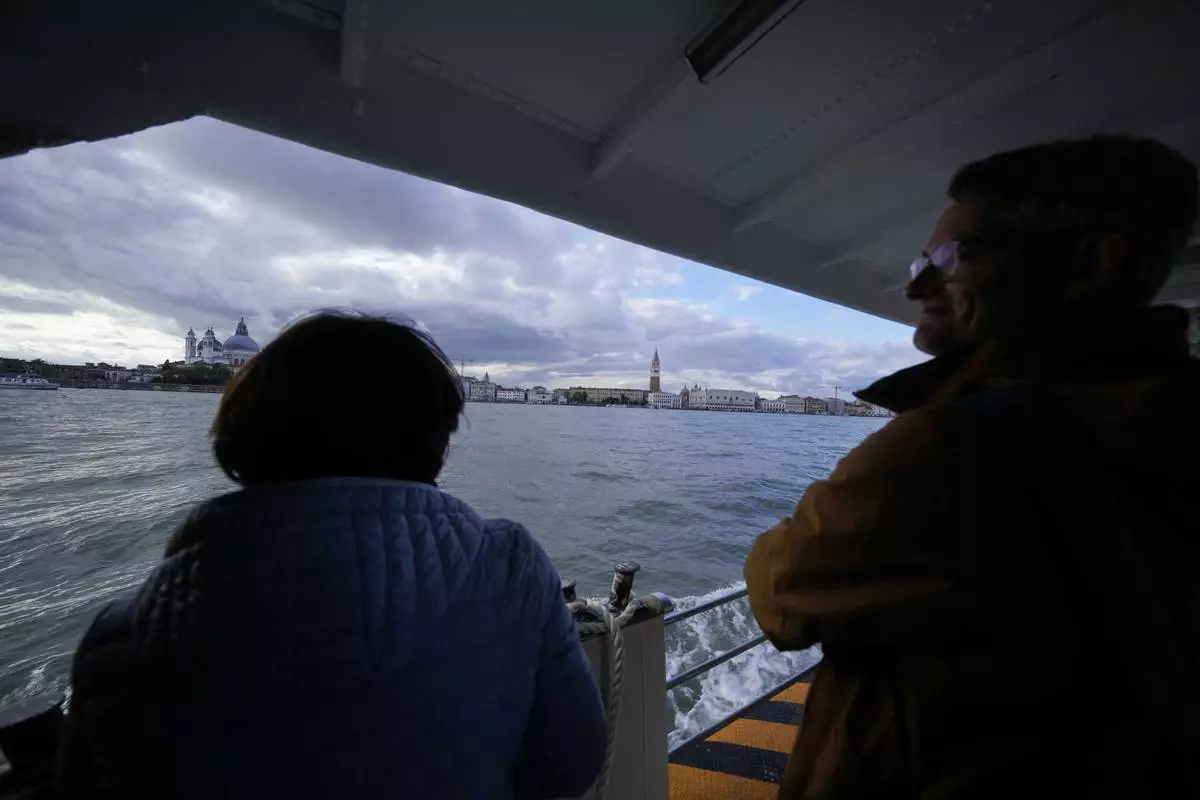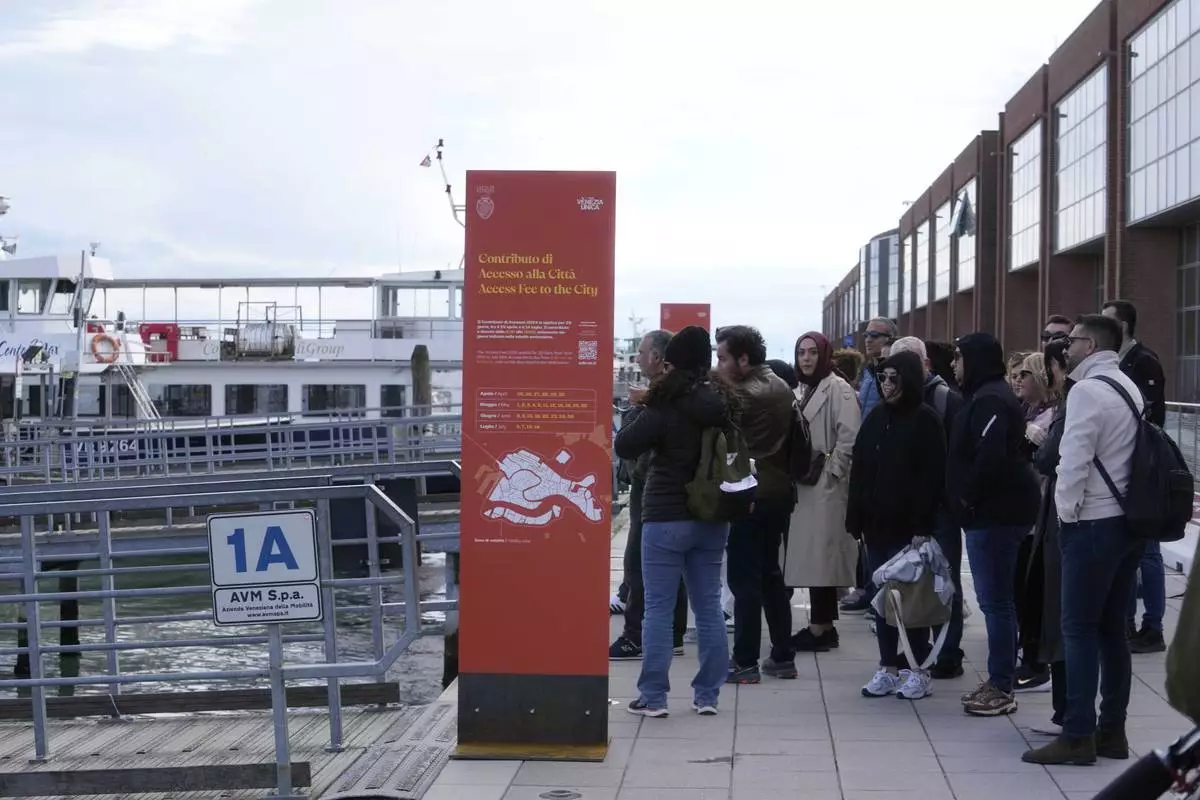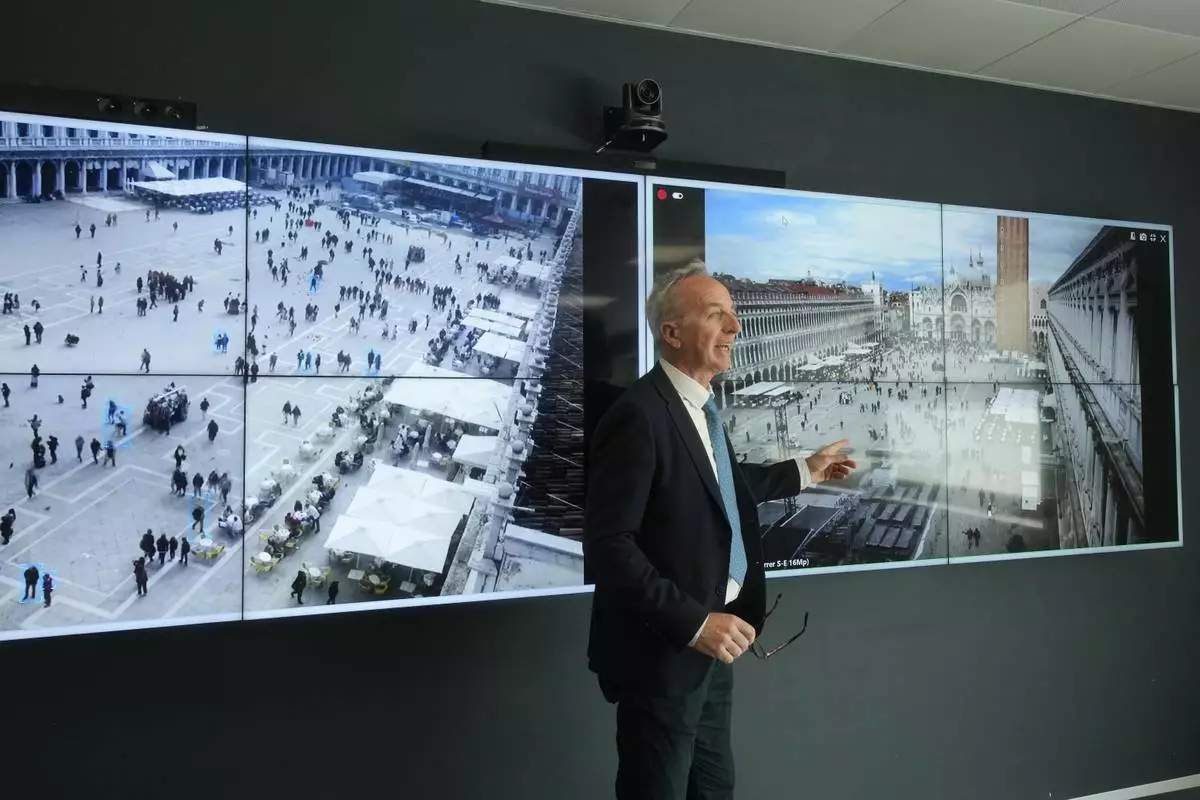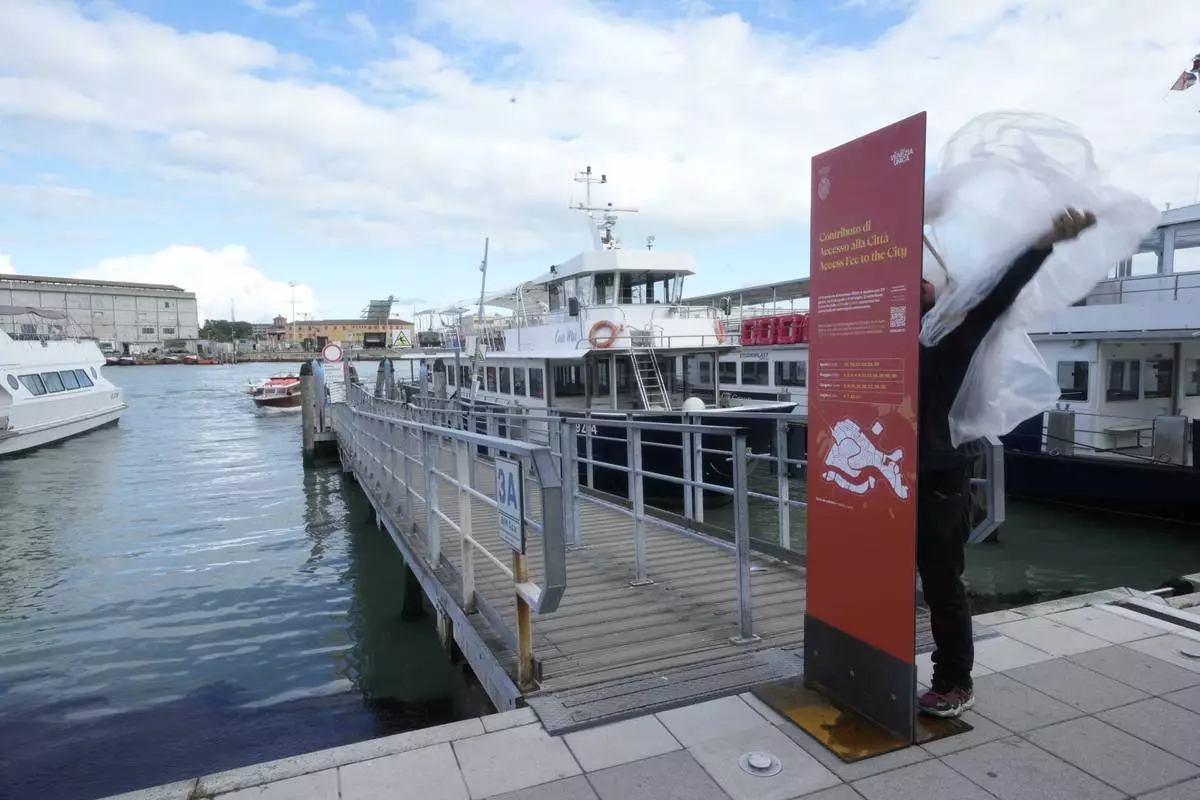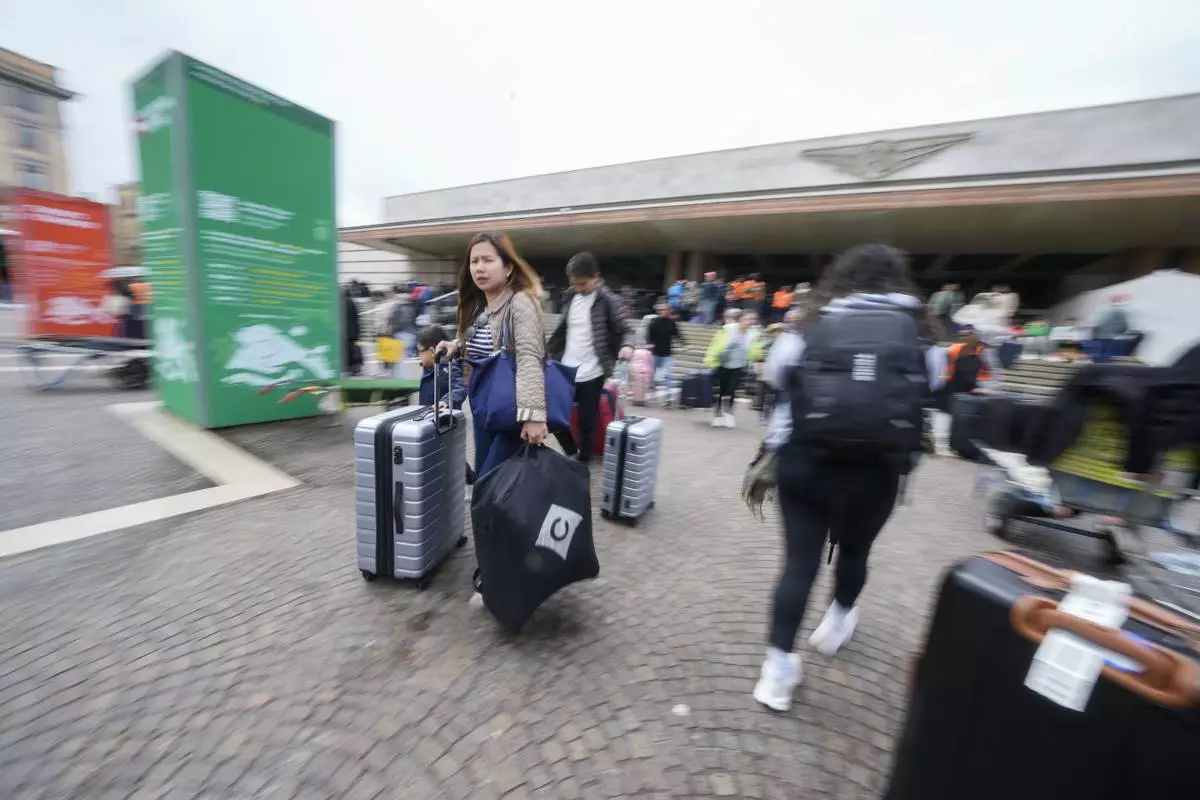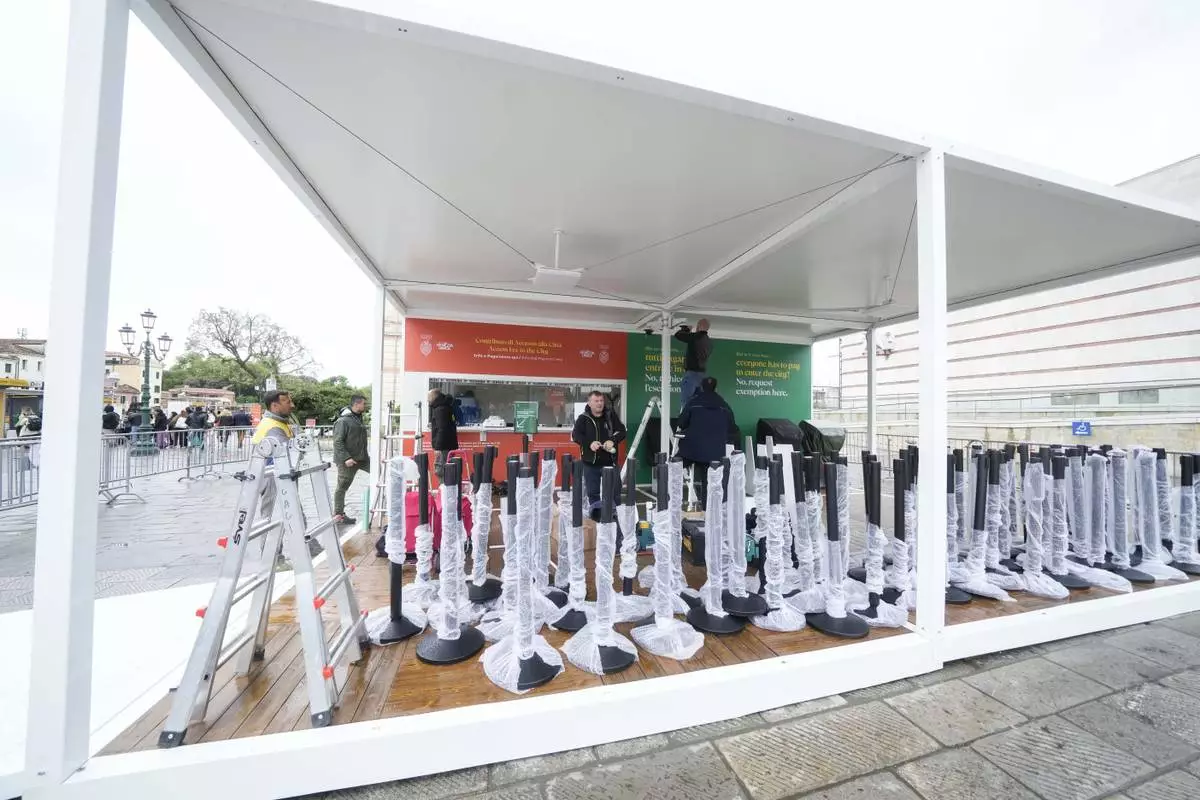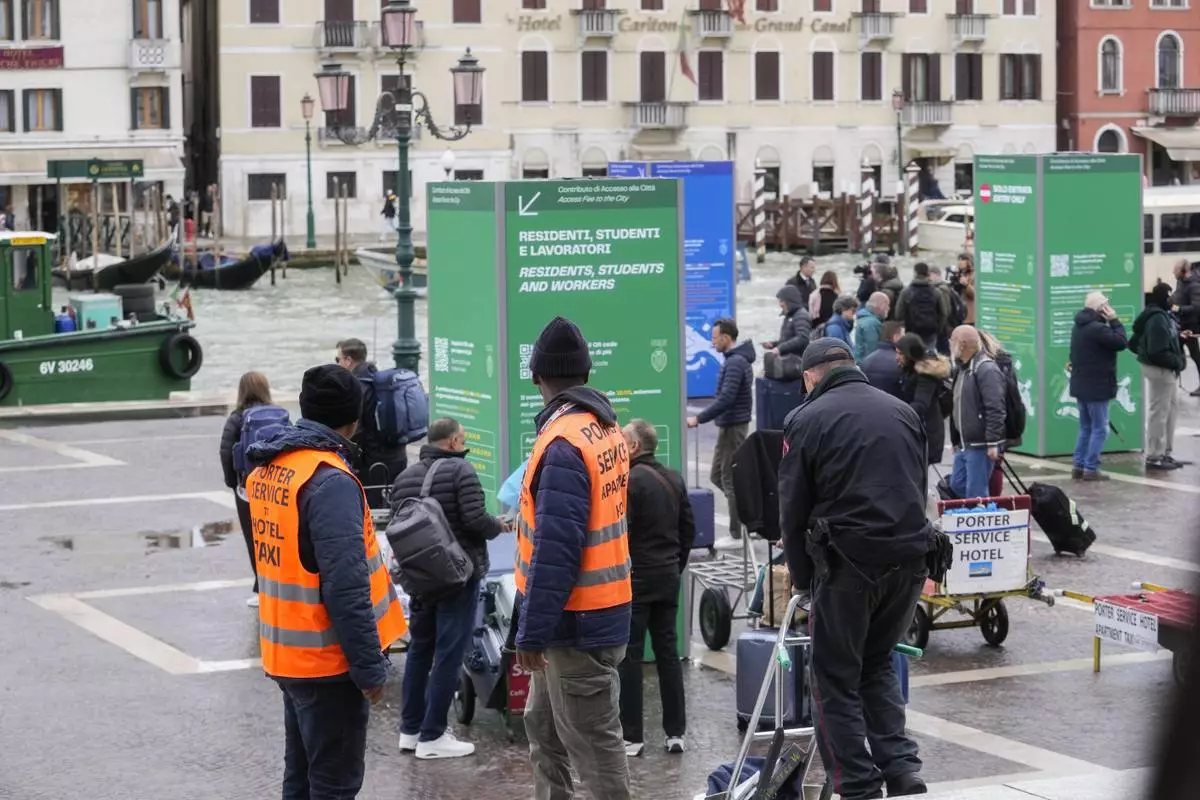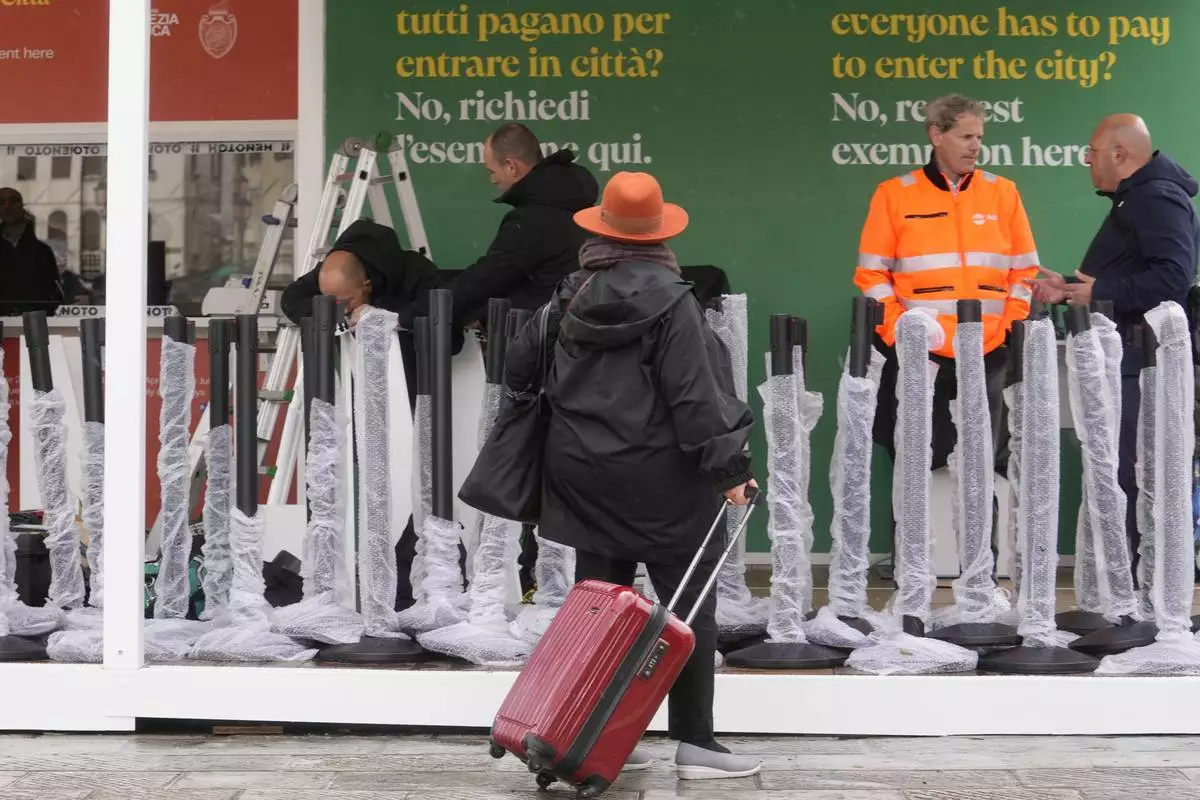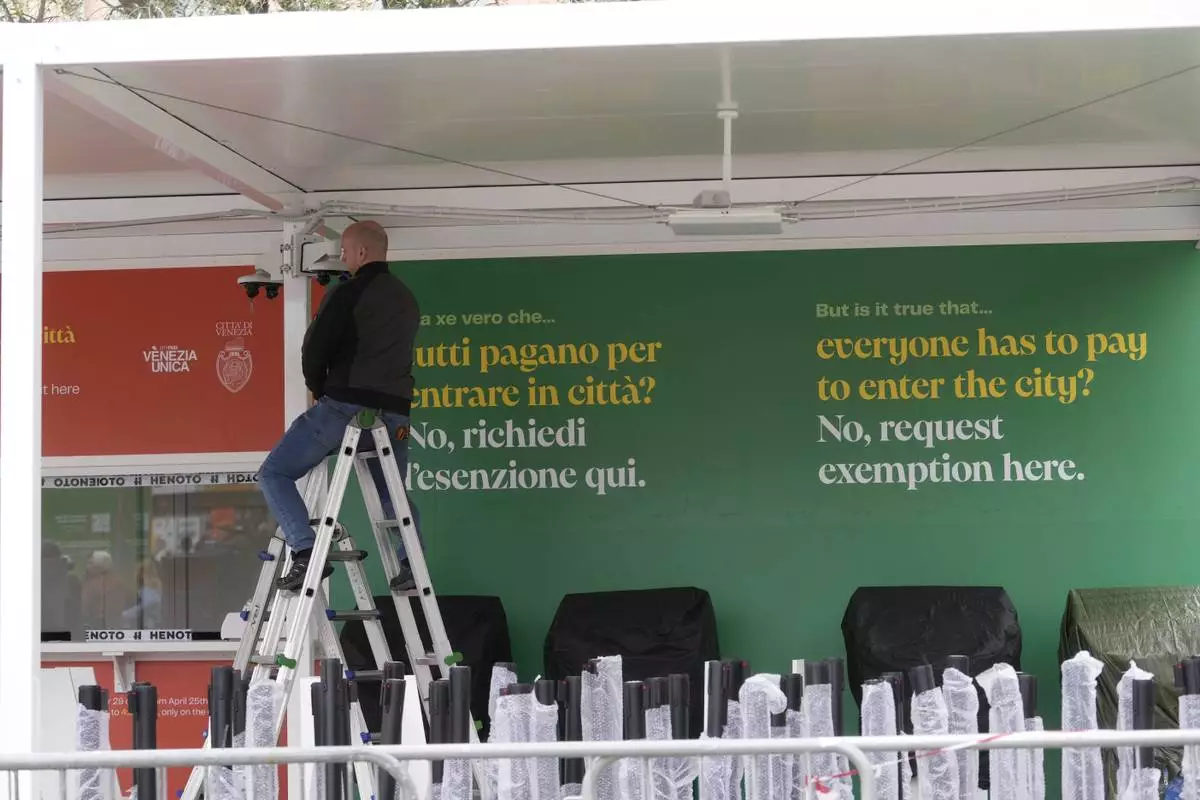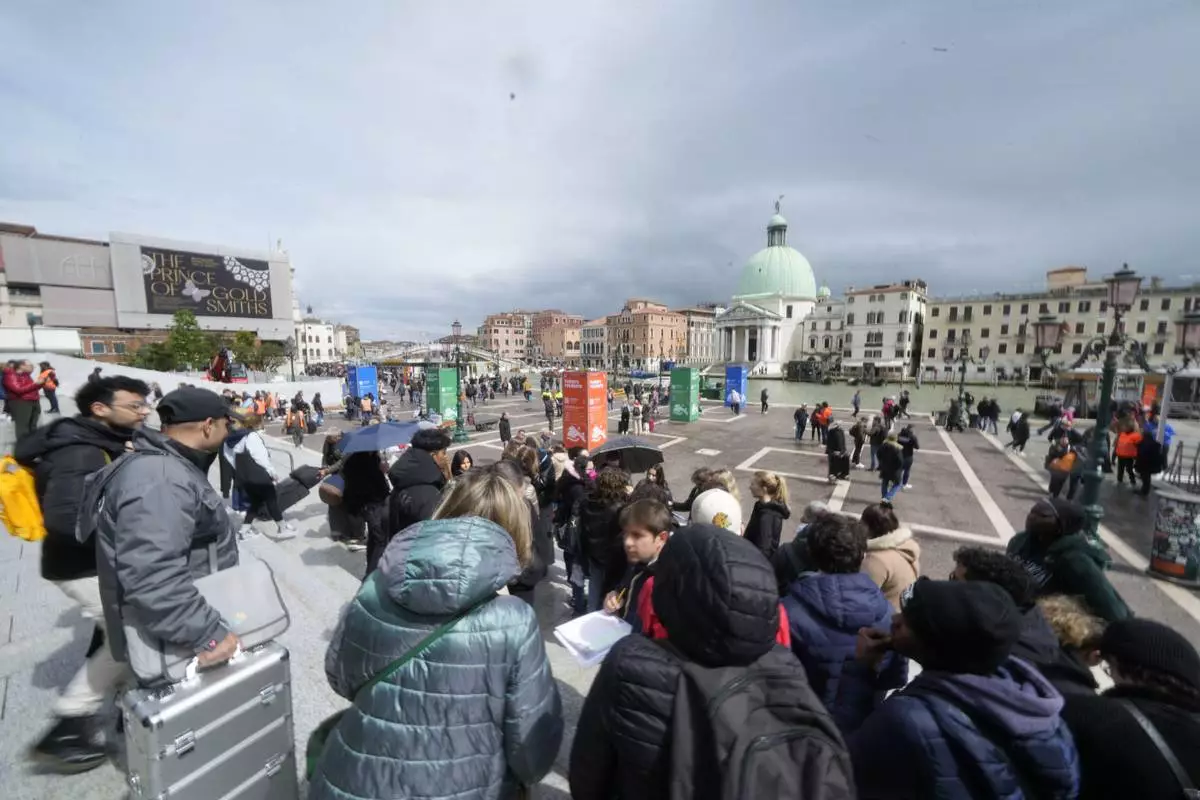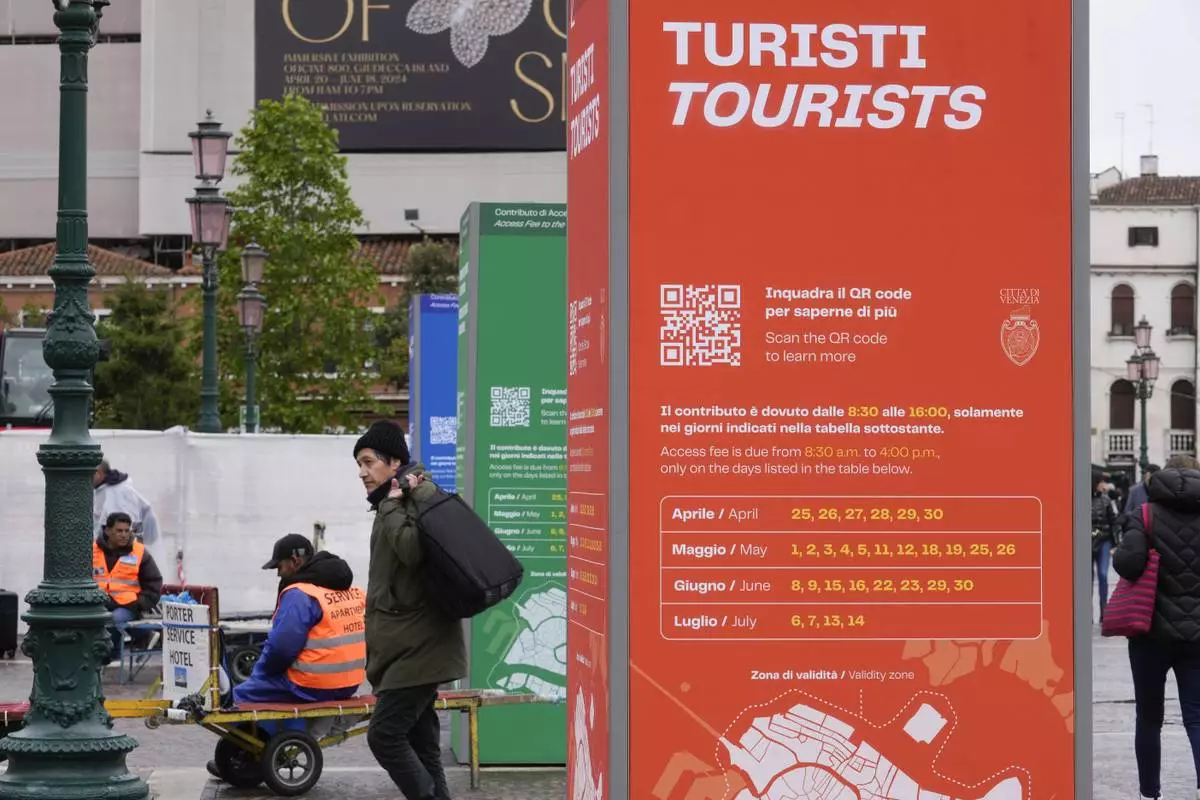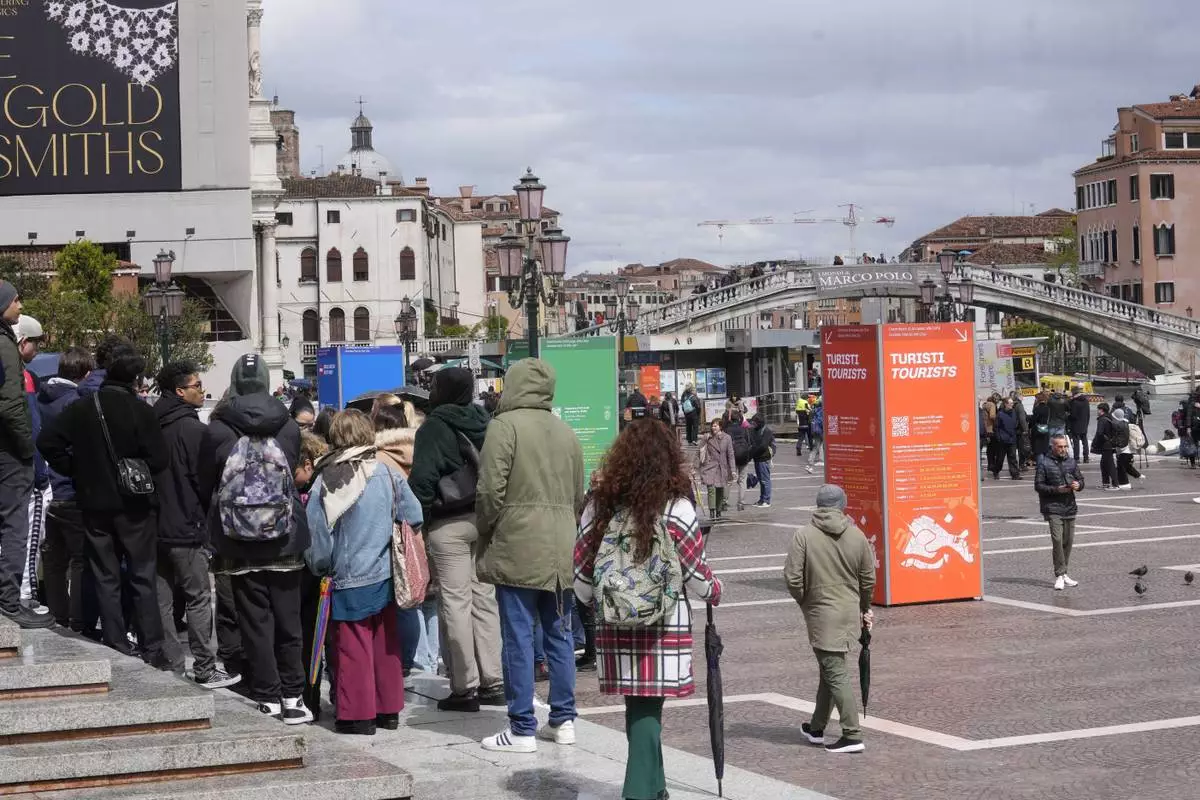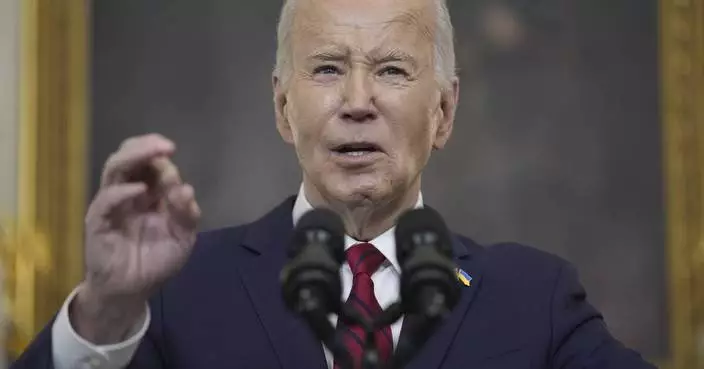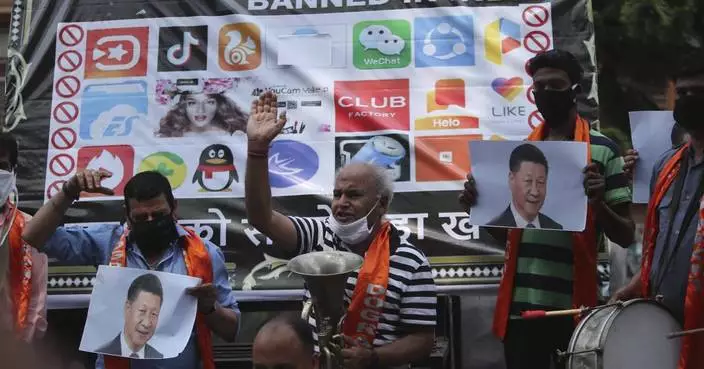Donald Trump was in full deflection mode.
The Democrats had blamed Russia for the hacking and release of damaging material on his presidential opponent, Hillary Clinton. Trump wasn't buying it. But on July 27, 2016, midway through a news conference in Florida, Trump decided to entertain the thought for a moment.
"Russia, if you're listening," said Trump, looking directly into a television camera, "I hope you're able to find the 30,000 emails that are missing" — messages Clinton was reported to have deleted from her private email server.
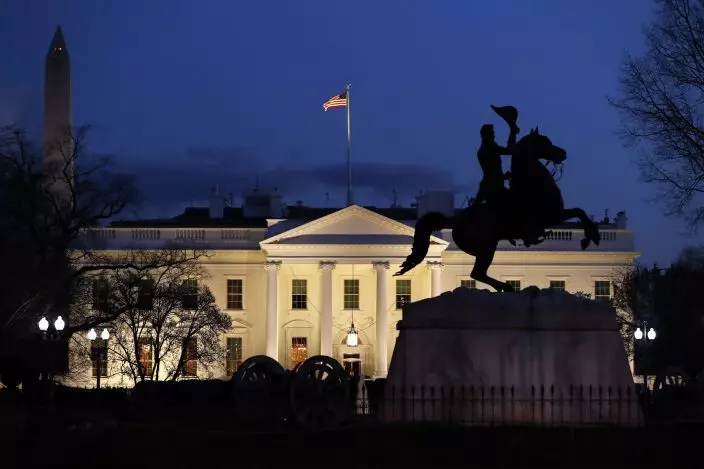
The White House is seen at dusk, Friday March 22, 2019, in Washington. Special counsel Robert Mueller has concluded his investigation into Russian election interference and possible coordination with associates of President Donald Trump. The Justice Department says Mueller delivered his final report to Attorney Barr, who is reviewing it. (AP PhotoJacquelyn Martin)
Actually, Russia was doing more than listening: It had been trying to help Republican Trump for months. That very day, hackers working with Russia's military intelligence tried to break into email accounts associated with Clinton's personal office.
It was just one small part of a sophisticated election interference operation carried out by the Kremlin — and meticulously chronicled by special counsel Robert Mueller.
We know this, though Mueller didn't make a single public comment since his appointment in May 2017. We know this, though the full, final report on the investigation, turned over to the Justice Department on Friday, may never be made public. It's up to Attorney General William Barr, who hasn't committed to releasing the full report but says he will inform Congress of Mueller's "principal findings" as early as this weekend.
We know this because Mueller has spoken loudly, if indirectly, in court — indictment by indictment, guilty plea by guilty plea. In doing so, he tracked an elaborate Russian operation that injected chaos into a U.S. presidential election and tried to help Trump win the White House. He followed a GOP campaign that embraced the Kremlin's help and championed stolen material to hurt a political foe. And ultimately, he revealed layers of lies, deception, self-enrichment and hubris that followed.
Weaving together thousands of court papers, the special counsel has made his public report. This is what it says.
RUSSIA, LOOKING TO INTERFERE
The plot began before Bernie Bros and "Lock Her Up," before MAGA hats and "Lyin' Ted," before there was even a thought of Trump versus Clinton in 2016. It started in 2014, in a drab, concrete building in St. Petersburg, Russia.
There, a group of tech-savvy Russian nationals, working at an organization called the Internet Research Agency, prepared "information warfare against the United States of America." The battleground would be the internet, and the target was the 2016 U.S. presidential election.
Using a game plan honed on its own people, the troll farm prepared to pervert the social networks — Facebook, Twitter, YouTube and Instagram — that Americans had come to depend on for news, entertainment, friendships and, most relevantly, political discourse.
It would use deception, disinformation and the expansive reach of the electronically connected world to spread "distrust towards the candidates and the political system in general." Ultimately, it would carry a budget in the millions, bankrolled, according to an indictment, by Yevgeny Prighozin, a man so close to the Russian president that he is known as Putin's chef. (Prighozin's company has denied the charges).
It was a long game. Starting in mid-2014, employees began studying American political groups to see which messages fell flat and which spread like wildfire across the internet. The organization surreptitiously dispatched employees to the U.S. — traveling through states such as Nevada, California and Colorado — to collect on-the-ground intelligence about an America that had become deeply divided on gun control, race and politics.
As they gathered the research, the trolls began planning an elaborate deception.
They bought server space and other computer infrastructure in the U.S. to conceal the true origin of the disinformation they planned to pump into America's social media blood stream. They began preparing networks of fake accounts they would use like sock puppets to masquerade as U.S. citizens.
The Russian trolls set up accounts that appeared to be associated with Black Lives Matter, the Tennessee GOP, Muslim and Christian groups and the American South. By late 2015, as Clinton sparred with Vermont Sen. Bernie Sanders, her rival for the Democratic nomination, and as American media still saw Trump as a longshot to emerge from a crowded Republican field, the Internet Research Agency began secretly buying online ads to promote its social media groups.
By February 2016, they were ready. A memo circulated internally. Post content about "politics in the USA," they wrote, according to court papers, and "use any opportunity to criticize Hillary and the rest (except Sanders and Trump— we support them)."
As disinformation scrolled across American computer screens, an entirely different Russian operation readied its own volley.
In March 2016, as Clinton and Trump began to emerge as the leaders of their respective parties, Russian military intelligence officers began setting a trap.
Hackers in Russia's military intelligence, known as the GRU, started sending dozens of malicious emails to people affiliated with Clinton's campaign, the Democratic Congressional Campaign Committee and the Democratic National Committee.
Like Watergate, it was a break-in. But this time, the burglary tools were emails disguised to fool people into sharing their passwords and in turn provide hackers unfettered access to their emails. The goal was to collect as many damaging documents as possible that could be released online and damage Clinton's candidacy.
In a few short weeks, the hackers had penetrated their targets and hit the motherlode: the private Gmail account of Clinton campaign chairman John Podesta.
A RECEPTIVE CAMPAIGN
While the Russians were hacking, a young Trump campaign adviser named George Papadopoulos received some startling news in London.
It was April 26, 2016. While traveling through Europe, he had connected with a Maltese academic. The professor, a middle-aged man with thinning gray hair named Joseph Mifsud, had taken a keen interest in Papadopoulos upon learning that he had joined the Trump campaign as a foreign policy adviser. To dazzle his young friend, Mifsud boasted of his high-level Russian connections and introduced him to a woman named Olga — a relative, he claimed, of Russian President Vladimir Putin.
Mifsud and Olga wanted Papadopoulos to arrange a meeting between Trump aides and Russian officials. Eager to ingratiate himself with the campaign, Papadopoulos brought up his newfound connections in a meeting with Trump and several high-ranking campaign officials, saying he could broker a Trump-Putin summit. When he raised the idea, his lawyers later said , Trump nodded with approval and deferred to another aide in the room, future Attorney General Jeff Sessions, who said the campaign should look into it. Sessions would later say he remembered telling Papadopoulos that he wasn't authorized to speak for the campaign.
When he walked into a London hotel for breakfast with Mifsud, Papadopoulos expected to discuss Russia's "open invitation" to meet with Trump. But the conversation quickly turned to another subject. Mifsud confided in Papadopoulos that Russia had "dirt" on Clinton. What kind of dirt? "Thousands of emails."
What happened next remains a mystery. Prosecutors haven't revealed exactly where Mifsud got his information or what Papadopoulos might have done with it. The encounter, the first known instance of a Trump aide hearing of stolen emails, would later help kick-start the Russia investigation. But at the time, it was just one of many connections already established between the Trump campaign and Russia.
Unbeknownst to the public, Trump personal lawyer Michael Cohen had been trying to broker a business deal in Russia for the Republican candidate. The proposal was for a Trump Tower Moscow. A letter of intent was signed. Cohen had discussed it with Trump and his children. Cohen had even gone so far as to reach out to the Kremlin directly for help, speaking with an official about ways to secure land and financing for the project.
While Cohen pursued the deal, another person with Russia ties joined the Trump campaign. Paul Manafort, a longtime Washington insider, had made millions as a political consultant for Ukrainian President Viktor Yanukovych and his pro-Russian political party in Ukraine. Over that time, Manafort developed a close relationship with a man named Konstantin Kilimnik, who the FBI says has ties to Russian military intelligence. Manafort also had worked for a Russian billionaire named Oleg Deripaska who is close with Putin.
But in March 2016, Manafort was looking for a comeback. His business had dried up after Yanukovych was ousted and fled to Russia. The millions that Manafort had hidden from the IRS while enjoying a lavish lifestyle were largely gone. With the Trump campaign, Manafort saw an opportunity to get back on his feet. He and his protege, Rick Gates, quickly worked their way into the highest levels of the campaign, and they began trying to make sure old clients had heard about their new positions.
As Trump clinched the Republican nomination, Manafort and those around him began preparing for a general election battle against Clinton.
The Russians did, too. The Internet Research Agency boosted its support of Trump — and disparagement of Clinton. Using stolen identities and bank account information, the troll farm also began buying political ads on social media services, according to Mueller.
"Donald wants to defeat terrorism ... Hillary wants to sponsor it," read one. "Hillary Clinton Doesn't Deserve the Black Vote," read another.
Meanwhile, hackers with the GRU secretly implanted malicious software — called X-Agent — on the computer networks of the DNC and the DCCC. It allowed them to surreptitiously search through the political operatives' computers and steal what they wanted. As the hackers roamed the Democratic networks, a separate group of Russian intelligence officers established the means to release their ill-gotten gains, registering a website, DCLeaks.com.
By May, the Democratic groups realized they had been hacked. The DNC quickly hired a private cybersecurity company, CrowdStrike, to identify the extent of the breach and to try to clear their networks of malware. But they kept it quiet until they knew more.
On the Trump campaign, Papadopoulos continued to push for a Trump-Putin meeting, unsuccessfully.
At the same time, another Russian outreach found a willing audience in Trump's eldest son, Donald Trump Jr.
In early June, Trump Jr. exchanged a series of emails with a British publicist representing Emin Agalarov, a pop singer in Russia, whose father had partnered with the Trumps on the 2013 Miss Universe pageant in Moscow. Emin Agalarov and Trump Jr. had become friendly, and the publicist, Rob Goldstone, had become a common intermediary between the two wealthy sons.
Over email, Goldstone brokered a meeting between Trump Jr. and a Russian lawyer. He said the lawyer had documents that could "incriminate" Clinton and they were being shared as part of the Russian government's support of the Trump campaign. "Seems we have some time and if it's what you say I love it especially later in the summer," Trump Jr. wrote back.
The meeting was held at Trump Tower in Manhattan on June 9. Trump Jr. attended along with Manafort and Trump son-in-law Jared Kushner. Participants in the room would later say the meeting was a bust, consumed by a lengthy discussion of Russian adoption and U.S. sanctions. To Trump Jr., the information wasn't useful ammunition against Clinton. He was less concerned that it came from Russia.
Days later, on June 14, the DNC publicly announced it had been hacked, and pointed the finger at Russia.
By then, the Russian hackers had launched DCLeaks.com. According to Mueller , the DNC announcement accelerated their plans.
They created a fake online persona called Guccifer 2.0, which quickly took credit for the hack. Through Guccifer, the hackers masqueraded as a "lone Romanian hacker" and released caches of stolen material.
The efforts attracted the attention of WikiLeaks, the anti-secrecy group led by Julian Assange from his exile within Ecuador's embassy in London.
On June 22, 2016, the group sent a private message to Guccifer: "Send any new material here for us to review and it will have a much higher impact than what you are doing."
Over the next several weeks, WikiLeaks requested any documents related to Clinton, saying they wanted to release them before the Democratic National Convention when they worried she would successfully recruit Sanders supporters.
We "think trump has only a 25% chance of winning against hillary ... so conflict between bernie and hillary is interesting," WikiLeaks wrote.
Using Guccifer, the Russian intelligence officers transferred the files to WikiLeaks, hoping for a big online splash.
They wouldn't have to wait long.
LEAKS AND CIGARS
July 22 was supposed to be a big Friday for Hillary Clinton's presidential campaign. The former secretary of state was planning to announce Virginia Sen. Tim Kaine as her running mate. The party's convention was just days away.
But at 10:30 a.m. Eastern time, WikiLeaks stole the limelight, releasing more than 20,000 stolen DNC emails.
The cascade of stolen material was almost immediately picked up by American news outlets, conservative pundits and Trump supporters, who in the wake of Clinton's FBI investigation for using a private email server, were happy to blast out anything with "Clinton" and "emails" in the same sentence.
So was Trump. After publicly questioning that Russia was behind the hack of Democratic groups, he took to the stage in Florida to make his famous call to Russia, "if you're listening." He would later begin praising WikiLeaks.
Smelling a possible political advantage, the Trump campaign reached out to Roger Stone, a close confidant of Trump's who is known for his bare-knuckles brand of political mischief. Stone had been claiming to have connections to WikiLeaks, and campaign officials were looking to find out when Wikileaks would drop its next batch of documents.
According to an indictment against Stone, after the first release of DNC documents, "a senior Trump Campaign official was directed to contact Stone about any additional releases and what other damaging information" WikiLeaks had regarding Clinton's campaign.
In August, Stone began claiming he had inside information into Assange's plans. At the same time, he was privately sending messages to a radio host and a conservative conspiracy theorist — both of whom had claimed to have connections to WikiLeaks — seeking anything they knew. (No evidence has emerged that these messages made it to Assange).
That same month there was a meeting that went to the "heart" of the Russia investigation, according to a Mueller prosecutor. It involved Manafort, and it remains an enigma, at least to the public.
Court papers indicate Manafort had previously shared polling information related to the Trump campaign with Kilimnik, his old Russian pal. According to emails and court papers, Manafort — looking to make money from his Trump access — had also been in touch with Kilimnik about providing private briefings for the billionaire Deripaska. (There's no evidence such briefings ever occurred).
Meeting with Manafort and Gates at New York's Grand Havana Room cigar bar on Aug. 2, 2016, Kilimnik brought up a possible peace plan for Ukraine in its conflict with Russia. What happened at that meeting is in dispute and much of it remains redacted in court papers.
But the Mueller prosecutor would note: The men left separately to avoid unwanted attention.
As the campaign entered the final stretch and Trump's advisers waited for the next WikiLeaks dump, Russian trolls— who had gained hundreds of thousands of social media followers — were barraging Americans with pro-Trump and anti-Clinton rhetoric, using Twitter hashtags such as "#MAGA" and "#Hillary4Prison."
By early October, Stone was looking for more. On Oct. 3, 2016, ahead of an expected news conference by Assange, Stone exchanged messages with Matthew Boyle, a writer at Breitbart who was close to Trump campaign strategist Steve Bannon.
"Assange — what's he got? Hope it's good," Boyle wrote to Stone.
"It is," Stone wrote back. "I'd tell Bannon but he doesn't call me back."
Hours later, Assange held a news conference in which he appeared to waffle on whether he would release additional documents about Clinton.
Bannon reached out to Stone: "What was that this morning???" Stone chalked it up to a "security concern" and said WikiLeaks would be releasing "a load every week going forward."
By Oct. 7, the Trump campaign was embroiled in its own scandal. The Washington Post released audio of Trump bragging about sexually harassing and groping women. But within hours, WikiLeaks gave Trump's team a break.
The first set of emails stolen from Podesta's accounts popped onto WikiLeaks' website. Stone's phone lit up. It was a text message from a Bannon associate.
"well done," it read.
A SERIES OF LIES
The first documented lie in the Russia investigation happened on Jan. 24, 2017, in the White House office of freshly appointed national security adviser Michael Flynn.
It was the Tuesday after Trump's inauguration, and Flynn was settling in after a whirlwind presidential transition.
Since Trump's victory in November, Flynn had become part of Trump's inner circle — and the preferred contact between the Trump team and Russia. In late December, Flynn had asked Sergey Kislyak, Russia's ambassador to the U.S., to reject or delay a U.N. vote condemning Israeli settlements in the West Bank. Days later, as the Obama administration imposed sanctions on Russia for election-meddling, Flynn implored Kislyak not to escalate a "tit-for-tat" fight over punishment imposed on Moscow for election interference.
But on that Tuesday, when FBI agents asked Flynn about those conversations, he lied. No, he said, he hadn't made those requests of Kislyak.
Days later in Chicago, other FBI agents confronted Papadopoulos as he had just stepped out of the shower at his mother's home. Though his mother would later say she knew it was a terrible idea, he agreed to go to their office for questioning, where he misled them about his conversations with Mifsud, the Maltese professor.
Months later — after Mueller's May 2017 appointment — Cohen lied to Congress about the Trump Tower Moscow project, saying it ended much sooner than June 2016. Cohen would later say he was trying to be loyal to Trump and match the public messaging of a president who had adamantly denied any business dealings with Russia.
Even when Trump aides tried to come clean and cooperate with Mueller's team, they couldn't keep their stories straight.
As he was working out a plea agreement with Mueller, Gates lied to investigators about his and Manafort's Ukrainian lobbying work. Manafort pleaded guilty and agreed to cooperate, but a judge later determined he had also misled Mueller's team about several matters, including about his interactions with Kilimnik. Those lies voided the plea deal.
The deceptions played out as Mueller methodically brought criminal cases. He indicted the Russian hackers. He did the same to the troll farm. He exposed Manafort's tax cheating and his illicit foreign lobbying, winning at trial and putting the 69-year-old political operative in prison for more than seven years. And one by one, his team got guilty pleas from Flynn, Papadopoulos and others .
Most recently, he indicted Stone, accusing him of witness tampering and lying to Congress about his efforts to glean information about the WikiLeaks disclosures. Despite emails showing him repeatedly discussing WikiLeaks with Trump advisers and others, Stone told lawmakers he had no records of that sort. (Stone has pleaded not guilty.)
In the backdrop of all this are Trump and his family.
Mueller's grand jury heard testimony from several participants of the June 2016 Trump Tower meeting arranged by Trump Jr., but no charges have been filed.
The mercurial president himself has made no secret of his disdain for the Mueller investigation and his efforts to undermine it. Mueller has investigated whether any of Trump's actions constituted obstruction of justice, but the special counsel hasn't gone public with the details of what he found.
And it's unclear when — or if — America will ever know the full story.
Read AP's coverage of the Russia probe: https://apnews.com/TrumpInvestigations



